The FBS Stereo Technique
Wide angle stereo technique for soundscapes and atmos in field recording.
by Fabian H.

FBS and FBS-2 are eqivalence stereo techniques, that allow you to capture the full width of natural soundscapes while preserving a lively and realistic sound image. Setup and characteristics:
This article covers the theory behind FBS. FBS-2 is a complementary technique covered in a dedicated article. Feel free to skip the theory and try them yourself. Both can be achieved using a standard 20cm stereo bar.
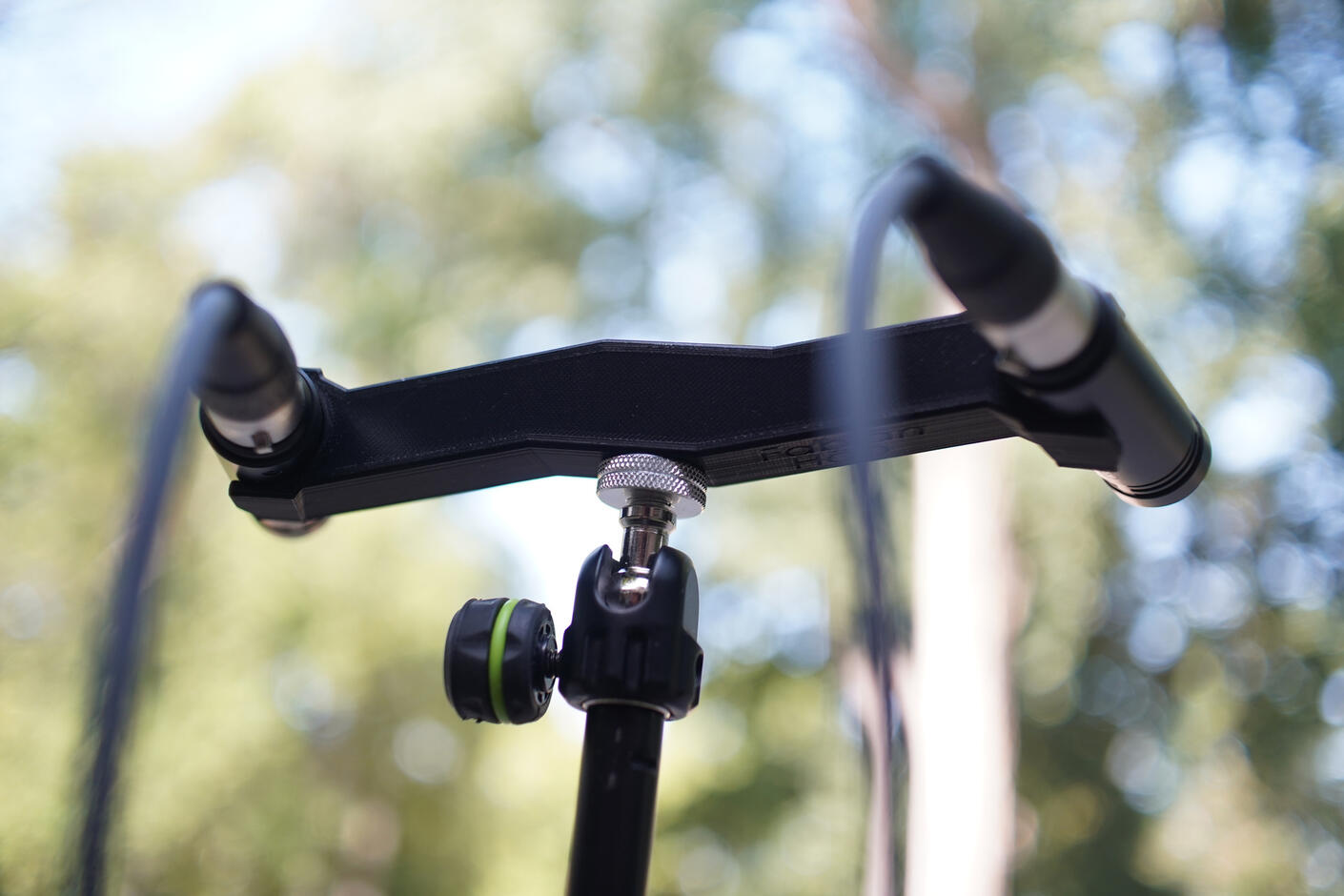
I assume you're already familiar with the fundamentals of the subject, i.e. how humans process stereo information, basic stereo setups, and how mic angle and distance affect recording characteristics. If not, I advise you to do some reserach on standard techniques and have a look at The Stereophonic Zoom by Michael Williams, The recording angle by Helmut Wittek and Günther Theile, this useful diagram by Eberhard Sengpiel, and his visualization tool.
Why another stereo technique?
…when there is already XY, ORTF, AB, DIN, EBS, NOS, RAI, Blumlein Pair, Faulkner Array, and so on. – In short: Because none of these have been designed with the specific requirements of soundscape recordings in mind.Among other things soundscapes are one thing – WIDE. That means: The stereo recording area (SRA)¹ of a stereo setup meant to capture the atmo needs to be just as wide. This is where all the equivalence (=mixed) stereophony techniques mentioned above need to be dismissed already (namely ORTF, DIN, EBS, NOS, RAI). Although these are great sounding in their designated discplines, their SRAs² of 81-101° are optimized for live performances on stage or in studio environments with otherwise silent (apart from reverberant rooms) surroundings.
¹ I use these terms in accordance with Eberhard Sengpiel. 2x Recording angle = Recording area. I don't like that term though.
² All numbers in this article are based on Eberhard Sengpiels research. Other authors come to different values, especially with runtime difference. This is due to the varying quality of the utilized test signal. Stereo localization based on runtime differences if highly frequency-dependant.
| Technique | Mic spacing | Mic angle | ∆L / ∆t | SRA |
|---|---|---|---|---|
| ORTF | 17cm | 110° | 60.5 / 39.4 | 96.36° |
| RAI | 21cm | 100° | 53.4 / 46.5 | 92.81° |
| DIN | 20cm | 90° | 52.6 / 47.3 | 101.5° |
| EBS | 25cm | 90° | 46.8 / 53.1 | 90.06° |
| NOS | 30cm | 90° | 42.3 / 57.6 | 81.01° |
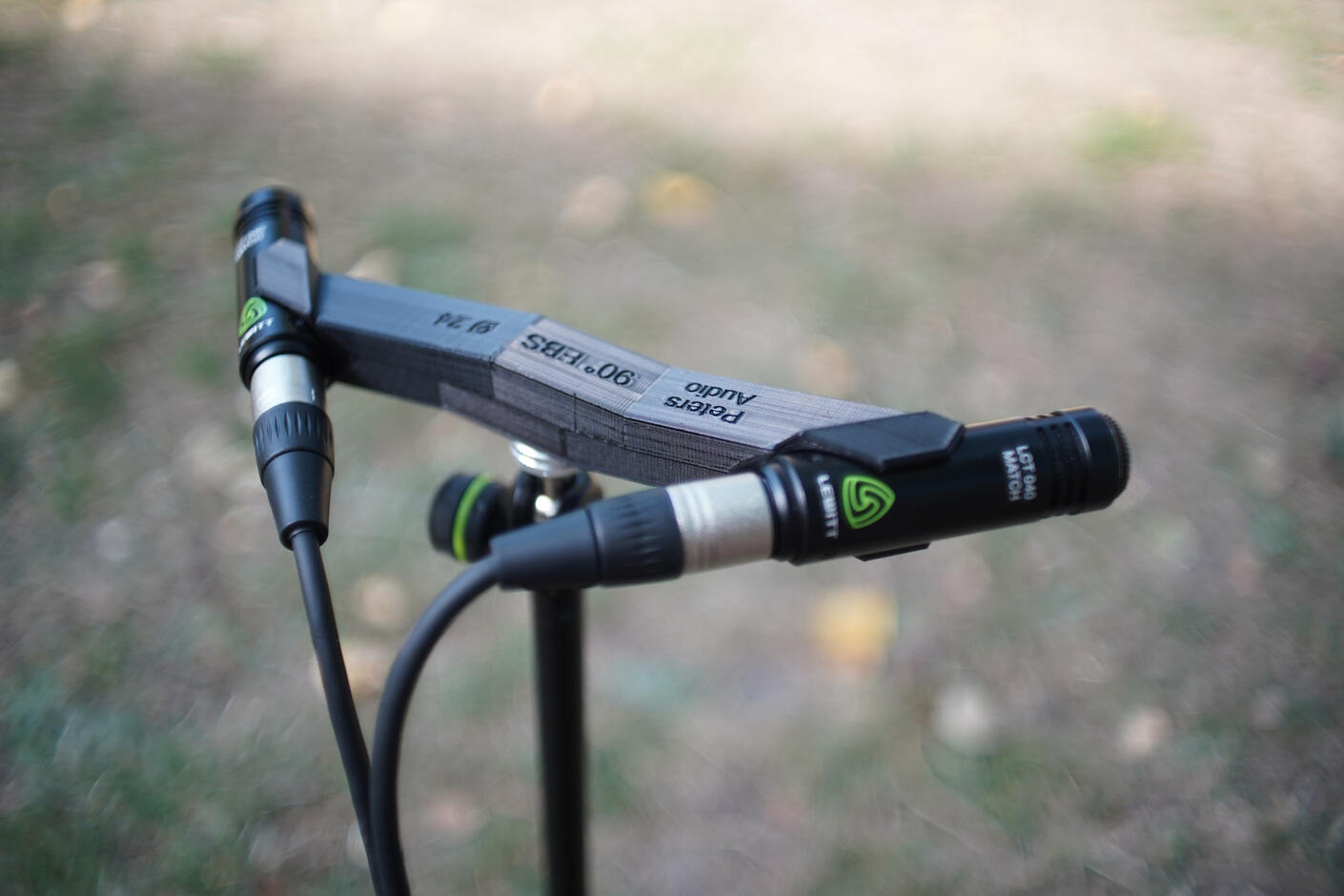
The consequence of a too narrow SRA: A large portion of what you hear in the real world sticks to the very extremes of your stereo panorama on playback. Where there are fine nuances in positioning of the real sound sources, on playback the phantom sound sources are crowded at hard left and hard right. In most cases, we do not want that. We want to have the phantom sound sources equally distributed and not have the listeners' attention driven towards the speakers themselves.
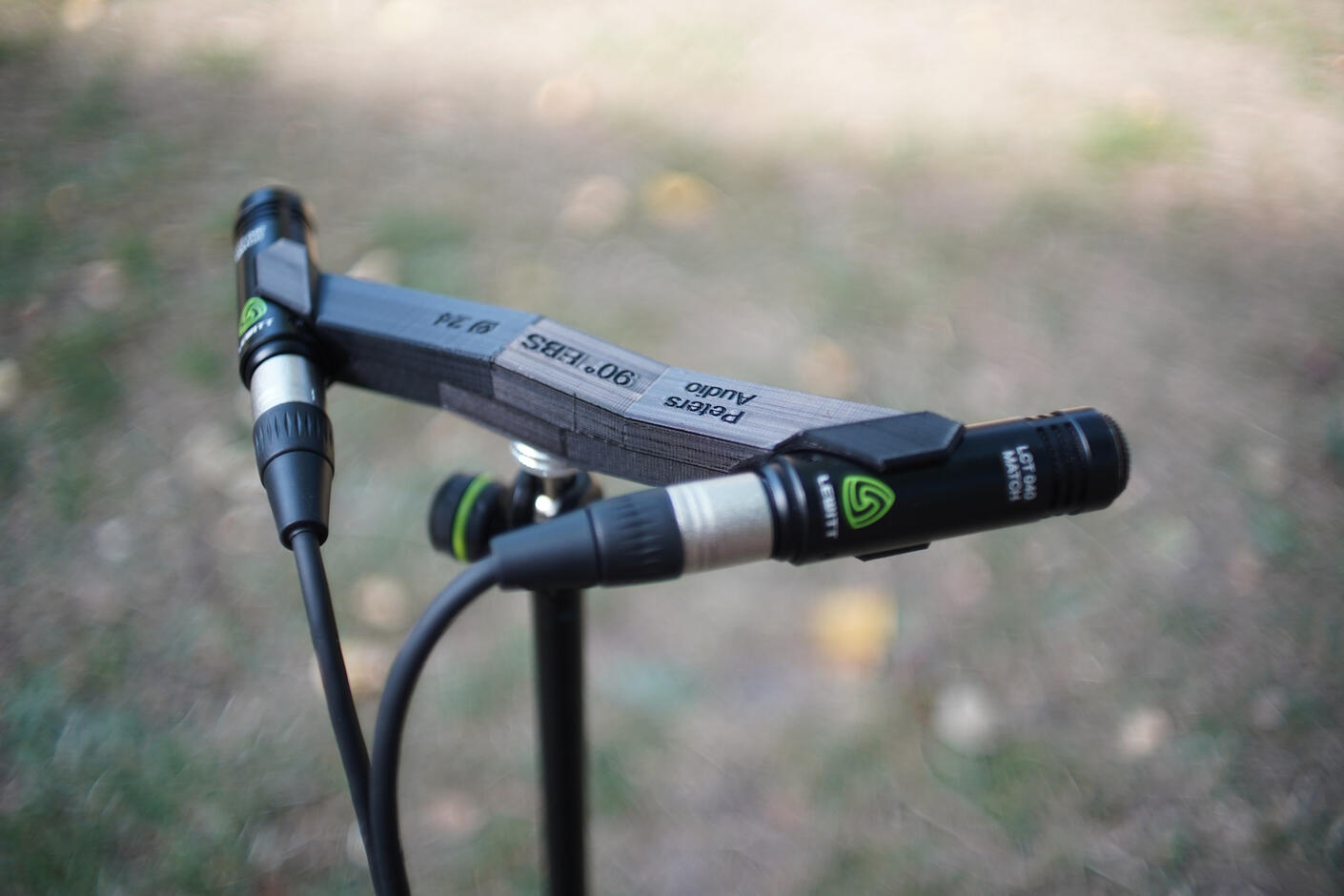
So, if the stereo recording area is crucial, the intensity stereophony techniques (∆L) XY and its relatives XY110 and XY120 with their SRAs of 192° / 170° / 158° should be a match then.
| Technique | Pickup pattern | Mic spacing | Mic angle | ∆L / ∆t | SRA |
|---|---|---|---|---|---|
| XY | Cardioid | 0cm | 90° | 100 / 0 | 192° |
| XY 110 | Cardioid | 0cm | 110° | 100 / 0 | 170° |
| XY 120 | Cardioid | 0cm | 120° | 100 / 0 | 158° |
| Blumlein | Figure eight | 0 cm | 90° | 100 / 0 | 75.74° |
Indeed these techniques are widely used in field recording. Wide recording area plus super compact design render this setup ideal for compact field recorders. I've heard many beautiful soundscapes achieved with these setups, yet to my ears - this is where it gets subjective - as soon as you introduce some runtime differences you don't want to go back to the 100% intensity based localisation of the XY family.³ For me, intensity based techniques lack the sense of depth and liveliness that equivalence stereophony techniques convey. Few classical recording engineers ever consider recording a symphonic orchestra using XY as main microphone system for this reason. Why would you use it for the environment's orchestra then?
³ For the sake of completeness: Another reason to dismiss the Blumlein Pair is its too narrow SRA of 75.74° - despite being basically XY with figure-eight-mics.
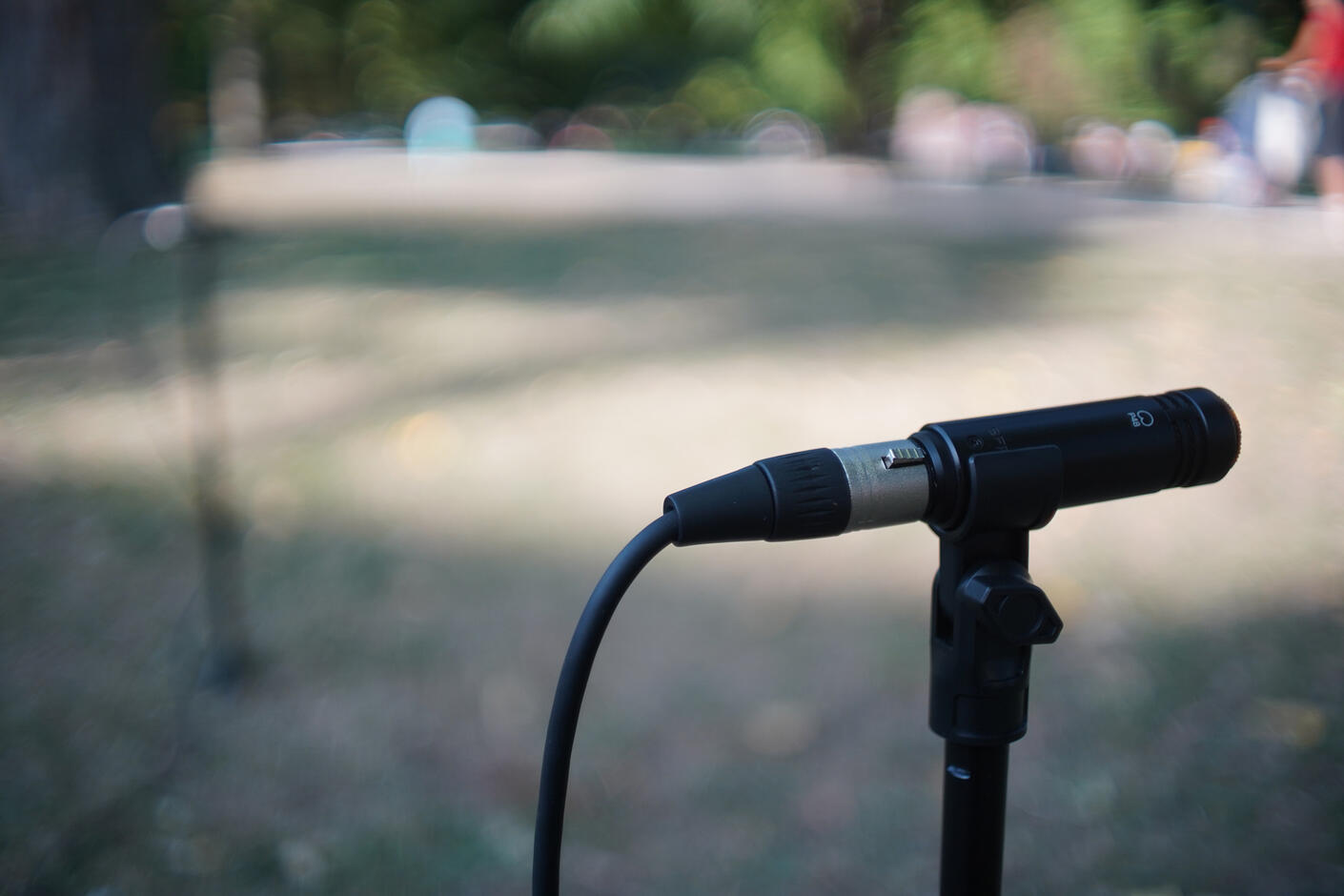
So, how about the time-of-arrival stereophony techniques (∆t) AB (Spaced Pair) and Faulkner Array (= AB20 with figure-eight mics) then. These are potentially wide indeed. AB73 produces a SRA of 90° - Reducing the spacing increases the recording angle up to 180° at AB51.⁴
| Technique | Mic type | Mic spacing | Mic angle | ∆L / ∆t | SRA |
|---|---|---|---|---|---|
| AB 51 | Omni | 51 cm | 0° | 0 / 100 | 180° |
| AB 60 | Omni | 60 cm | 0° | 0 / 100 | 118° |
| AB 73 | Omni | 73 cm | 0° | 0 / 100 | 90° |
| Faulkner | Figure eight | 20 cm | 0° | 0 / 100 | 180°+ |
This seems ideal and many field recordings indeed use Spaced Pair setups. So, what's the problem? It's getting subjective again. What many people like about AB is the sense of spaciousness it conveys. And I like that too. AB tends to sound full and big, but also blurry, vague, lacking definition and orientation. So I'd make a differentiation here. If the recording's purpose is to serve as a background accompaniment for a more complex audio scene - say in a film or video game - this characteristic is perfectly suitable and warmly welcome.⁵ Other sounds will provide orientation and the feeling of having something to 'grasp'. If the soundscape is meant to be listened to on it own, then more definition and orientation seems favourable.
⁴ Further reducing the distance between mics technically does not increase the SRA any more, yet still narrows the phantom sound stage so the full stereo panorama isn't covered to the full extent. Nevertheless spacing can get as low as 20cm (≙ Faulkner Array) for example to widen solo vocals just somewhat over a regular mono recording. Another reason for 'overly wide' SRAs of the AB technique is based on the fact, that AB has a strong - what I call - fisheye effect. Two-thirds rule as consequence.
⁵ I personally even like to drive it over the top, AB150, totally undefined, ultrawide sounding, for this purpose. Surreal.
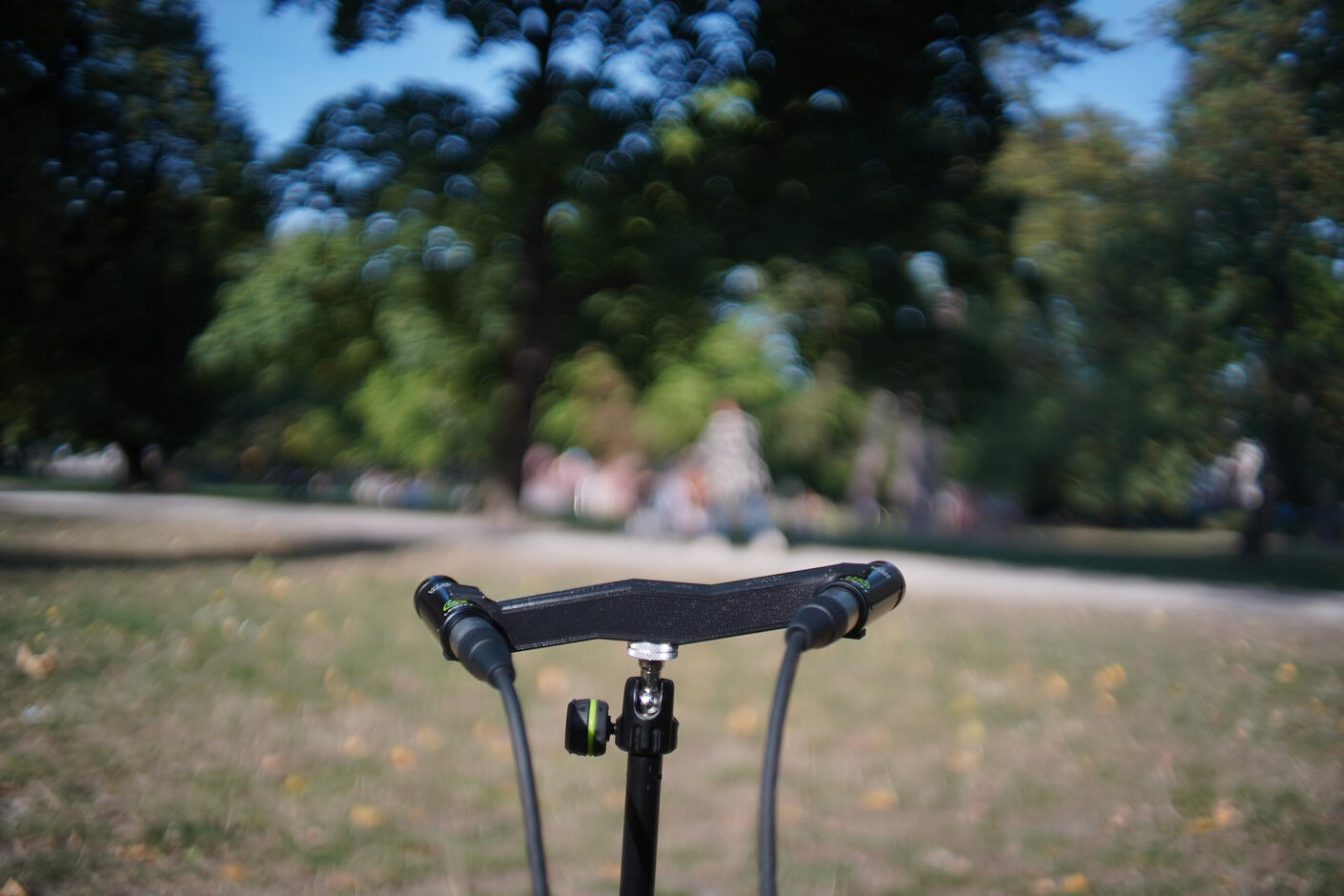
This is where equivalence stereophony techniques come back into play. XY and AB are the extremes of the stereophony spectrum and are well established in field recording, but both come with their own problems. To date there is no established equivalence stereophony technique optimized for soundscape recording, that represents a good compromise within that spectrum and combines the best of both worlds. FBS is the result of my attempt to do so.

The setup is simple
Mic pickup pattern: cardioids (2x)
Mic spacing: 20cm
Mic angle: 40°
The result
160° recording angle (or strictly speaking 161.8°)
41.6% ∆L / 58.3% ∆t - Pleasently full yet defined sound
Fairly even distribution of phantom sound sources, low 'fisheye effect'
Natural loudness rolloff towards the sides, gives a (slight) sense of distance for hard L/R signals, no attention driven towards the speakers
Perfectly clear stereo center, noticeable off-axis coloration only towards the extremes, supporting the slight distance effect (↑)
High direct-to-reverberant ratio in the stereo center, more reverberant towards the extremes, supporting the slight distance effect (↑)
Mediocre phase correlation and mono compatibility
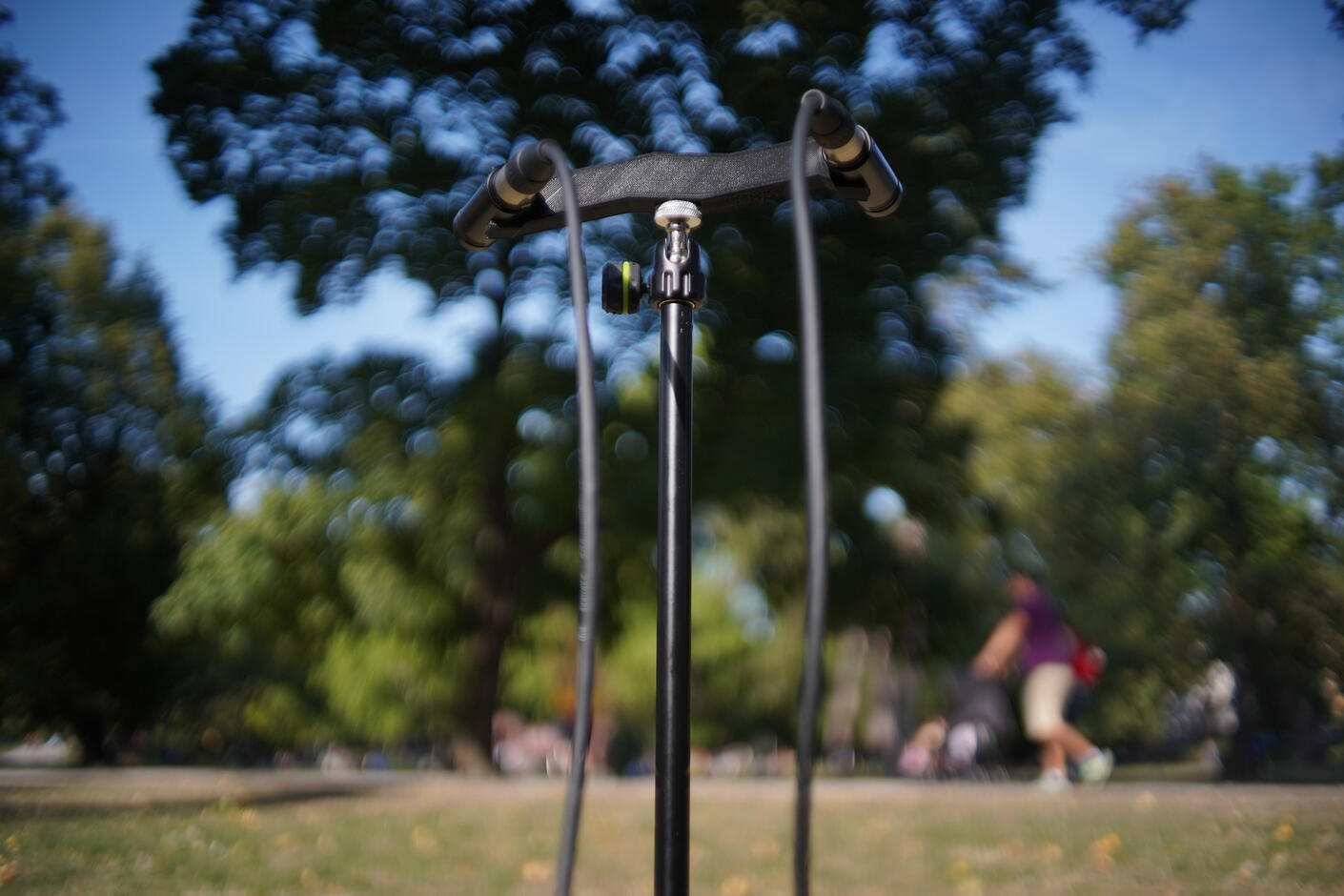
Getting there...
If you're going for such a wide SRA of 160° there are compromises to be made. You can't have it all. As soon as you de- or increase some variable within the setup, others will change as well. And the effect may or may not be favourable. It's all about finding the subjectively ideal compromise, the personal sweet spot.The beforementioned mid-side loudness rolloff (stereo pickup pattern), off-axis coloration, and mid-side direct-to-reverberant ratio are perfectly correlated, as they are all defined by the mic axis angle. When the axis angle increases (mics pointing more directly towards the more remote sound sources), all three effects decrease, and vice versa. So let's sum them as mid-side inhomogeneity. Due to the negative correlation between mic axis angle and mid-side inhomogeneity, they can even be treated as one combined dimension.So, to give you one example of how tricky this is: Mid-side inhomogeneity can be reduced by increasing the mic axis angle. Placing the mics at 70° and 11cm apart will still result in a SRA of 160° (157.9°) identical to FBS. The problem is we now have a ∆L/∆t of 66.1 / 33.8. The runtime ratio is too low to give it that favourable sense of spaciousness a high ∆t provides.And another one: It indeed is possible to achieve a pleasant ∆L/∆t AND lower mid-side inhomogeneity. But that combination does only exist at the cost of lower SRAs. Like 60° mic axis angle (→ lower mid-side inhomogeneity) and 22cm spacing resulting in a nice ∆L/∆t of 56.8 / 43.1 but in a SRA of only 120° (121.0°).It's possible to display everything going on here in a coloured 3D diagram.
x: mic spacing
y: mic axis angle + mid-side inhomogeneity
z: SRA
Dot colour: ∆L (=100-∆t) [reaching from 0 to 100, mapped as colour gradient]
But as we already decided on an SRA of 160°, one of these four dimesions gets deprecated. And another one follows immediately. With a set SRA, there is a negative corrlation between spacing and angle. This allows to combine them into one dimension (ranging from small spacing + high angle to greater spacing + low angle). Sounds a little complicated. It only means: We can make a list. Here it is...
| Spacing | Angle | ∆L / ∆t | SRA (exact) |
|---|---|---|---|
| 11cm | 70° | 66.1 / 33.8 | 157.9° |
| 12cm | 65° | 63.0 / 36.9 | 159.9°. |
| 13cm | 60° | 60.0 / 39.9 | 162.7° |
| 15cm | 55° | 54.6 / 45.3 | 159.9° |
| 17cm | 50° | 49.4 / 50.5 | 157.9° |
| 18cm | 45° | 46.5 / 53.4 | 162.3° |
| 20cm | 40° | 41.6 / 58.3 | 161.8° |
| 22cm | 35° | 37.0 / 62.9 | 162.2° |
| 25cm | 30° | 31.0 / 68.9 | 158.2° |
| 27cm | 25° | 27.0 / 72.9 | 162.0° |
So, now the challenge is to find the right one. Chose your own from the list. The top entries have a low mid-side inhomogeneity (and a low fisheye-effect) but a (for me) too ∆L-heavy ∆L/∆t. The bottom entries have a higher mid-side inhomogeneity (plus a more noticeable fisheye effect) and a (for me) too ∆t-heavy ∆L/∆t. In between is the compromise zone. For me, the sweet spot is 20cm-40°: FBS.
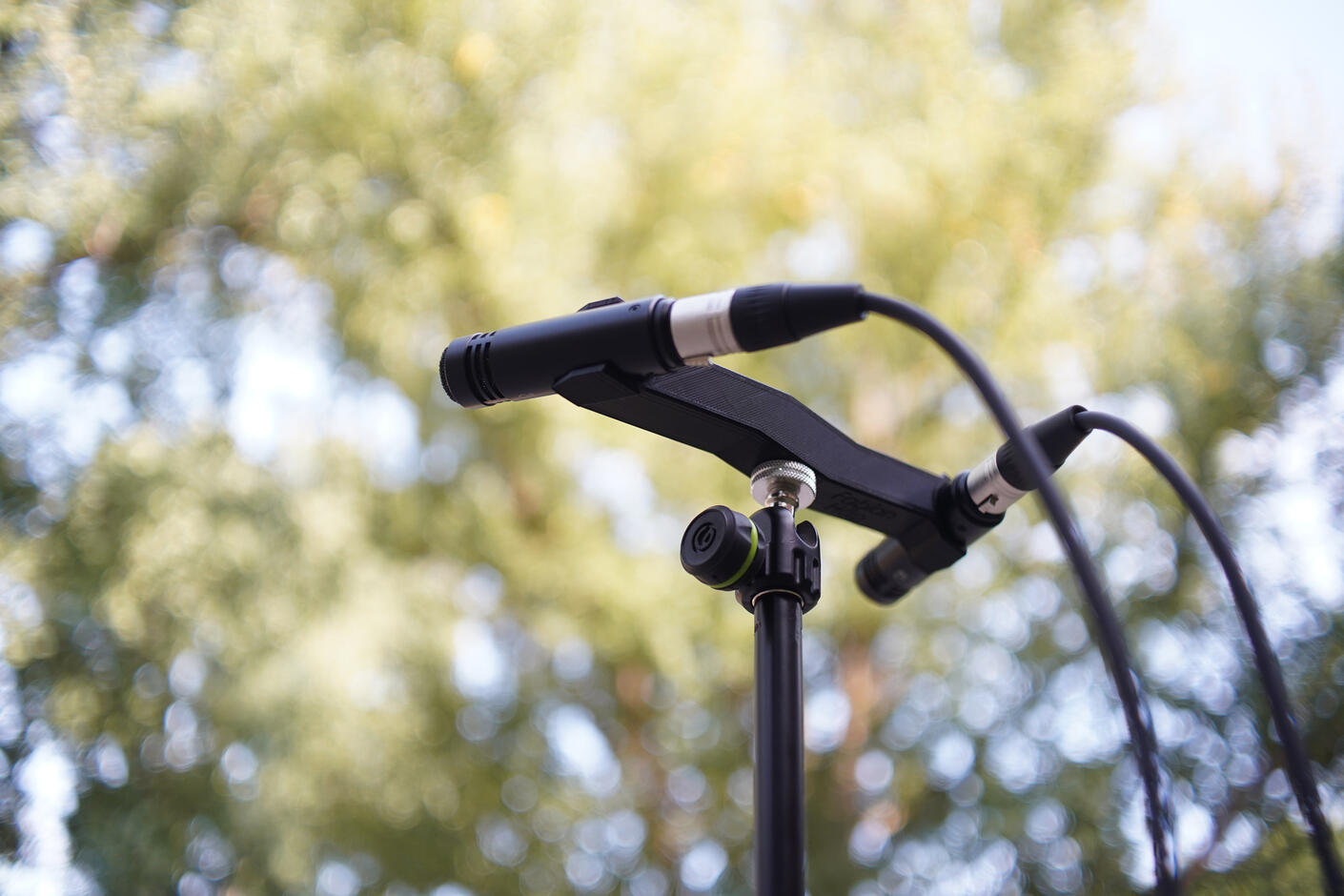
Final thoughtsNow it's time for some relativation: Giving things names makes them sound significant. But mid-side inhomogeneity really isn't that bad. For me, the coherent combination of mid-side loudness rolloff, off-axis coloration and direct-to-reverberant ratio is not only worth the increased ∆t, but also enjoyable on its own. I like to compare it to a vignette effect in photography. You can actually welcome it. And if you don't, FBS-2 is for you. It reduces mid-side-inhomogeneity (i = 4.03 to i = 2.52) at the cost of a noticeably reduced ∆t (44.7%) and a slightly decreased SRA (150°).
And one last point for the sake of completeness: mono compatibility. I don't care about mono compatibility. There are few situations where an atmo is required to be mono, and I'm not interested in these. The best way to turn FBS into mono is extracting the L or R channel as an emergency solution. If summing both to mono is a good idea will depend on the frequency content. Worth a try in any case.
A footnote
The FBS mic clips you see in the photos have been customly designed and manufactured by Jonas Peters / Peters Audio. No sponsoring, no product placement. Gratefulness, for that there's someone doing these things. You may want to have a look at his online store (german) for XY, ORTF and other mic clips. Custom ones also, obviously.
Photos taken using an old (1970s) Olympus 35mm f/2.8 G.Zuiko Auto-W lens adapted to a Sony Alpha 7 III.
So, that's it...
Thank you very much. Tell me your thoughts on FBS, and your experiences. Your feedback is highly appreciated.